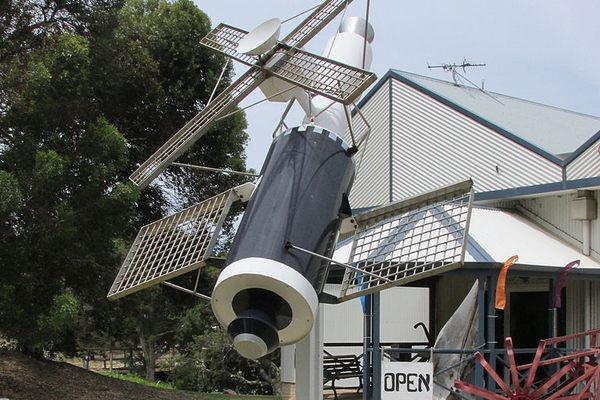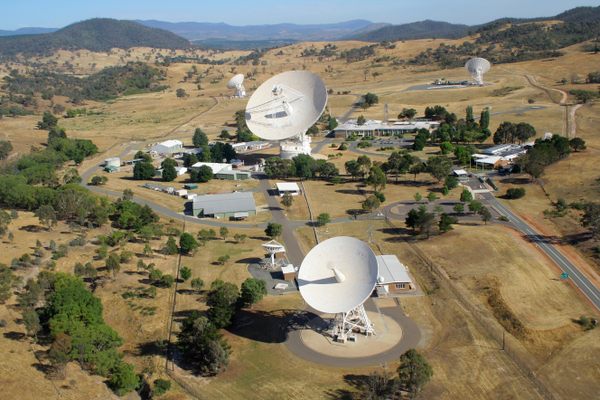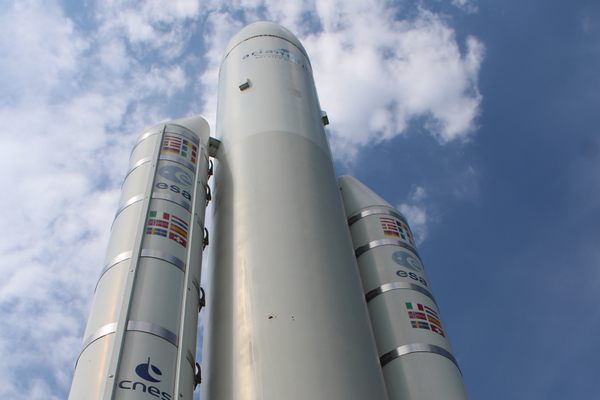About
On a clear day in the Lizard Peninsula of Cornwall, you can just make out the three massive satellite dishes of the Goonhilly Earth Station towering on the horizon. As you make your way down the scenically empty B3293 highway, signs advertising taxi companies with vaguely intergalactic-inspired names suggest something otherworldly once went on nearby.
Eventually, "Arthur," the first and largest of the Goonhilly satellite dishes, looms into view, flanked by "Merlin" and "Guinevere." Surrounded by not-a-whole-lot and populated largely by seabirds, the satellites are an unexpected addition to this starkly beautiful landscape.
Goonhilly Earth Station has been, since its inception in 1962, one of the planet's most important terrestrial communication stations, used to broadcast signals into space and around the world from dozens of dishes. The site's major satellites were named after Cornish legends.
At 85 feet in diameter, Arthur (officially called Goonhilly Antenna 1) has played a key role in broadcasting several landmark events of the second half of the 20th century, ranging from the moon landing to the iconic Live Aid concert of 1985.
The location was selected for its remoteness and clear lines of sight to the Atlantic and Indian Oceans. It remained a key player in satellite communications for over four decades, until 2006, when operations were moved to to Herefordshire and the site fell into disuse.
Poor Arthur (who is a Grade II-listed protected structure) and friends went through some tough times, but change is afoot. There are plans to bring Goonhilly into the 21st century as a revamped space port.
Until that happens, the visitors center at the station remains closed to the public, though the satellites and center are still operational. You can wander around the perimeter, listen to the mysterious low hum that reverberates in the air, and lose yourself in the sublimity of three massive satellite dishes looming in a stark landscape.
Related Tags
Know Before You Go
Don't try to drive in through the old driveway - it's shut now. But you can park elsewhere (National Trust carparks are nearby) and take yourself on a walk around the fenced-in site.
Just to add to the oddness of the place, there is an ancient standing stone in the vicinity, best found using an OS map.
Community Contributors
Added By
Published
October 23, 2017
Sources
- http://home.bt.com/tech-gadgets/goonhilly-earth-station-satellite-arthur-moon-landings-live-aid-11364197460912
- http://www.bbc.com/news/uk-england-cornwall-31823167
- http://www.satellitetoday.com/technology/2015/08/13/historic-goonhilly-earth-station-revitalized-by-new-business/
- http://www.goonhilly.org/antennas/ghy-1-arthur
- http://www.goonhilly.org/training-and-education/visitor-centre
- https://www.cornwalls.co.uk/attractions/goonhilly-satellite-earth-station.htm


